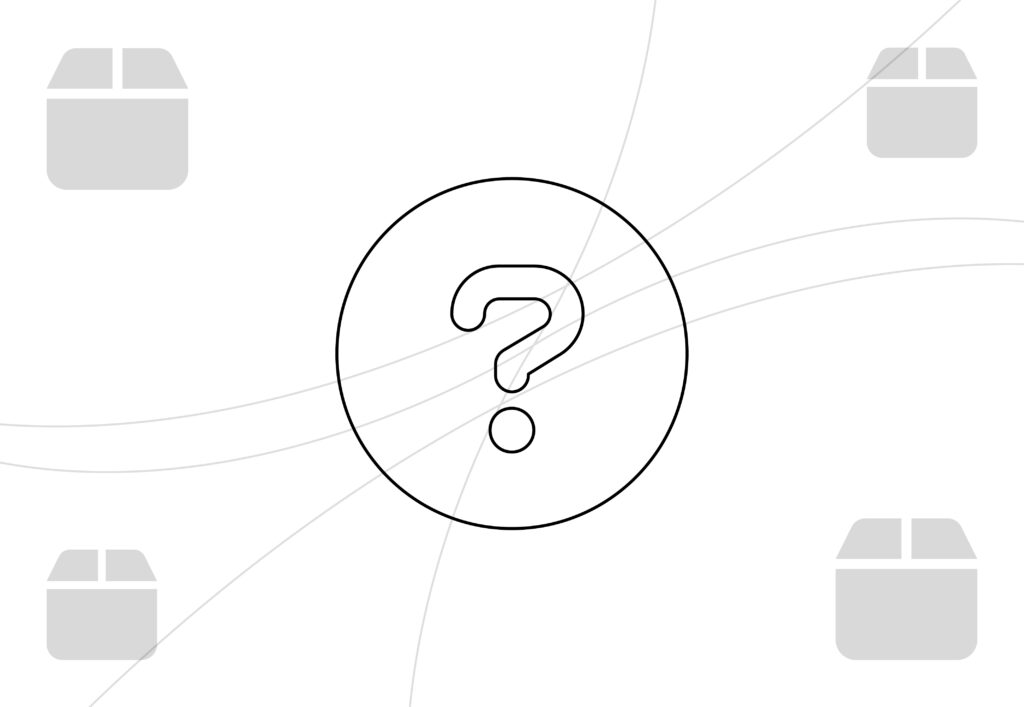
10 unexpected ways to improve your content distribution

Ever created a great piece of content that didn’t get much engagement or many impressions? It’s disappointing, right? Creating high-quality content can take up a lot of time and money, so it’s important that your target audience sees your content and you drive results from it; that’s why a strong content distribution strategy is so crucial.
Content distribution is how we get our content in front of the right people (e.g. our target audience). Ultimately, content distribution should help you expand your reach and increase brand awareness, which contributes to conversions, sales and revenue.
In this article, I will dive deep into the world of content distribution and break down 15 unexpected ways you can improve it, so you can drive results from your content and get the ROI you deserve.
If you are looking for support with your content strategy, then get in touch. Our team of content experts create and implements unique strategies for our clients to make sure they achieve their goals and outcompete rival brands.
10 unexpected ways to improve your content distribution
Now this is a simple but effective way to distribute your content. Email footers are often overlooked, but this passive way of distributing content is a brilliant way to subtly get your content out there without being perceived as spammy.
Every business has an email footer, and if your business doesn’t yet, go make one (after you’ve read this blog, of course). They are in every email a company sends, so if you put your content within your email footer, your content will get:
- Daily exposure with little effort
- Viewed by internal and external stakeholders
- Received more positively by recipients, because, generally, the people seeing the content will be receptive to you as they most likely already know who you are and what your business is.
Another plus of using email footers as a way to improve content distribution is that they are a form of soft promotion, meaning it doesn’t come acrossas pushy or spammy to viewers.
Email footers are also easy to refresh and update, so if you have a new piece of content that you would like to include, you can swap out old content and distribute a new piece.
It is also important to note that using email footers in this way turns the entire team into company ambassadors and portrays a positive company culture. If all employees have the same email footer, you can expand reach quickly. Say each team member sends 10 external emails per day, and you have 70 employees, that is 700 content impressions per day!
Potential content you could put in your email footer:
- Evergreen resources (e.g. newsletter sign-up link, content hub, guides)
- Latest blog
- Social post (e.g. announcement or product launch)
- Podcast episode
2. Use your content as sales collateral
Using content as sales collateral is a powerful way to get your content in front of highly engaged and relevant audiences. Because sales collateral is often provided in 1-1 situations where recipients are interested and receptive to information, this method is a smart way of distributing content
You can embed content links within sales collateral. For example, you could back up a point in your sales pitch with a relevant blog post. As well as this, you could link to case studies on your website to prove ROI to potential clients. To demonstrate expertise, you could also include links to reports or guides in your sales collateral.
Another way to distribute content in the sales funnel would be to take a piece of content e.g. a white paper, and provide potential clients with this as a digital PDF or paper copy. This provides your sales team with a direct reason to share relevant content with a target audience.
We all know how many email conversations occur during the sales process, so why not provide useful content in emails to help demonstrate expertise to a potential client? This could help the potential client feel valued by the sales team as content is relevant and helpful in addressing their pain points.
Top tip: Adjust the type of content distributed depending on the stage in the buyer journey. For example, if buyers are in the top of the funnel, the sales team could share blogs and guides, whereas is the buyers are in bottom of funnel, then case studies and reports can be shared.
Social listening is the process of monitoring and analysing social media content and conversations that are relevant and related to your brand. How can we use this to distribute content? Well, we can monitor these conversations and take part in them. When we actively engage with our audience, we can add value through our content. Therefore, you will come across authentic and organic in the way you distribute content. With this method, it’s really important not to push irrelevant content towards your audience, but to provide content that will solve problems and help them in some way.
You can monitor relevant conversations on social media platforms by exploring industry hashtags, analysing competitor activity and searching for relevant keywords.
Remember, when distributing content via social listening, your responses should be authentic and natural. Don’t push your content too hard, but offer it to your audience in case they find it helpful.
Another way to distribute content via social listening is to identify key industry leaders/speakers/potential clients and direct message them with a piece of content. This approach is a personal way to build professional relationships.
Speaking of social media, utilising the power of social media platforms is quite an obvious but incredibly effective way to distribute content to your audience. The power of social media comes from its reach and its versatility. Social media platforms are the main source of information for most people nowadays, so if you aren’t leveraging social media, it’s likely your competitors will be.
Social media is a powerful way to distribute content because it amplifies reach (almost instantly). You can get your content in front of your followers within a matter of seconds. As likes and reposts come in, more and more people, beyond your followers, will start to see your content. Therefore, taking the time to create a high-quality, relevant and engaging social media post that aligns with the platform recommendations is essential to drive results.
As social media post formats differ greatly within platforms and between platforms, you can repurpose content in multiple formats. I will explain more about repurposing content later on in this blog, but in relation to social media, for example, you could create an Instagram reel that also works as an Instagram story and a TikTok video.
Another great aspect of social media when it comes to distributing content is that social media is … social. The platforms are built for communication and engagement. Therefore, social media is a wonderful opportunity to engage with your audience, provide value and spark/join conversations.
Another huge advantage of using social media to distribute content is that it can be organic or paid. Organic social media success requires top-quality content and community engagement, whereas paid social media includes boosted posts, retargeting and sponsored content. Speaking of paid social media, let’s explore this bit further in the next section.
5. Paid channels are effective for content distribution
Paid channels (such as paid social, Google Ads and influencer partnerships) are a highly effective method for content distribution, especially when brands want to get in front of their target audience quickly and at scale.
If you want to distribute content and have a short window of time, then paid channels are the way forward. With most paid channels offering highly precise targeting methods (such as advanced demographic, behavioural and interest-based targeting tools), you can be sure that paid social channels will likely increase your visibility and engagement. This is because your content will be distributed to the users who are most likely to need/want your service or product.
Top tip: the more valuable the content you distribute using paid channels, the more likely you are to drive better results. Paid channels can do a lot to help you increase engagement, but making sure you have good content too is key to success.
The other benefit of using paid channels is that the results are trackable and measurable, meaning you can monitor the results of your paid channels and adjust strategy accordingly.
Finally, paid channels allow you to retarget pre-existing customers or those who have shown interest in your brand but have yet to make a conversion. By amplifying and distributing content that has performed well, you can distribute previous content. Moreover, paid channels can amplify high-performing content, giving it a second life and further extending its reach. When used strategically alongside organic and owned media efforts, paid distribution can significantly enhance the overall content marketing strategy. Ultimately, investing in paid channels is not just about visibility—it’s about driving meaningful engagement and business results.
6. Repurpose content into a different format
Repurposing content simply means transforming a piece of content into different formats. For example, you could turn a blog post into a social media post or a webinar into a YouTube video. By distributing content in this way, you can increase reach and engagement whilst also saving time. If content is valuable, repurposing enables you to increase the lifespan of your content. It allows you to reach new audiences who use different channels and respond to different content formats.
7. Utilise influencer outreach (especially in niche communities)
Influencers, particularly those in niche communities, are a brilliant tool that you can utilise to distribute content to highly engaged audiences. Influencers in niche communities typically have smaller but highly engaged audiences who deeply trust influencer opinions and recommendations. Therefore, if you hire an influencer who is relevant to your brand, to can each your target audience and increase engagement.
Ultimately, people trust people. Associating your brand with a trustworthy figure will help increase consumer interest significantly.
Working with micro influencers also offers cost-effective scalability. Instead of investing heavily in one major influencer, you can collaborate with several micro-influencers across platforms like Instagram, TikTok, YouTube, or niche forums.
Ultimately, micro influencers help with not just content exposure but, more importantly, they boost consumer trust, loyalty and engagement. Therefore, working with influencers in niche communities is a powerful way to distribute content to ideal audiences who are more likely to find value in your brand.
8. Master your SEO efforts
Ensuring you are optimising your content and website is a crucial way to distribute content. The better optimised your content is for search engines, the more online visibility you will receive and the more people will see your content.
Internal linking is an extremely important component of SEO that you need to get right. By linking to relevant internal pages or posts in your content, you are telling your audience where they can go to view more content and making sure they stay looking at your website for longer. Not only does this boost user experience, but it tells search engines that you understand your site’s structure and the relationships between pieces of relevant content.
By using internal linking techniques, you distribute content via the links, but you also improve your chances of ranking highly in the SERPs, which distributes content via online visibility.
9. Make the most of your internal networks
Sometimes the phrase ‘it’s who you know’ stands true. You can utilise your company’s internal networks, such as employees and partners. Every employee in a business will have their expertise and network. So, having your employees share content with their network will help increase reach and improve brand trust. A great way to distribute content to your employees is through internal platforms like intranets, Slack, or newsletters, as it allows content to be easily shared across departments, driving awareness internally.
Having your team act as brand ambassadors is essential as it increases authenticity and trust. Because of this, when employees distribute content, the receivers are more likely to respond well to the content as they respect the person sending it.
10. It’s time you get used to AI
It’s no secret that AI is everywhere, and it isn’t going anywhere. Leveraging AI to distribute content can streamline and enhance the process by personalising delivery and optimising reach.
AI tools can analyse audience preferences, behaviours, and engagement patterns to recommend the most relevant content at the ideal time. By automating distribution across channels such as email, social media, and websites, AI ensures content is delivered to the right people, boosting engagement. AI-powered content generation and repurposing can also create tailored versions of the same content for various platforms, increasing visibility.
If you want to learn more about how AI is changing the marketing function, read our white paper. It was made to prepare you so you are ready and thrive using AI.
Need support with your content strategy?
Here at Embryo, our content team are highly experienced in creating and implementing successful content strategies for a range of clients. Get in touch with us, and we can start your growth journey today.



